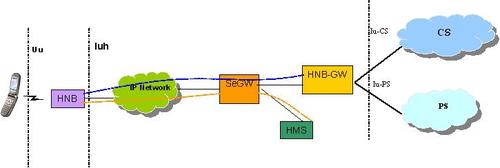Femto Cell
A femto cell is a radio access network element that supports one or more of the GSM/WCDMA family of radio interfaces, operates in a limited geographic area in licensed spectrum, may operate over the public internet, and supports a limited number of simultaneous users in a home environment.
Its principal functions are for coverage extension and for offloading users from the cellular network.
Femto cell offers advantage to both subscribers & opertaors. It will reduce network infrastructure cost and reduce traffic on traditional radio network. And subscribers will get better indoor coverage.
Femto cell standardization is currently in progress by 3GPP. 3GPP Release 8 describes the femto architecture. 3G femto access point is called Home NodeB(HNB).
3GPP Iu-Based HNB Architecture
A low power transmitting device is installed indoors (home or office), and connected to the Internet via cable, DSL, on-premise fiber optic link, or a similar IP backhaul technology. This connection is used to integrate the femto cell with the wireless operator’s core network.
3GPP femto architecture consists off Home NodeB (HNB), Security gateway (SeGW), HNB management system(HMS) and HNB gateway (HNB-GW)

There is a single HNB-GW per HNB Access Network whereas the SeGW could be implemented on a separate device (i.e. not integrated in HNB-GW) and for capacity reasons may be able to support all the HNBs connected to a number of HNB-GWs, or conversely a number of SeGWs may be required to support all the HNBs connected to a single HNB-GW
